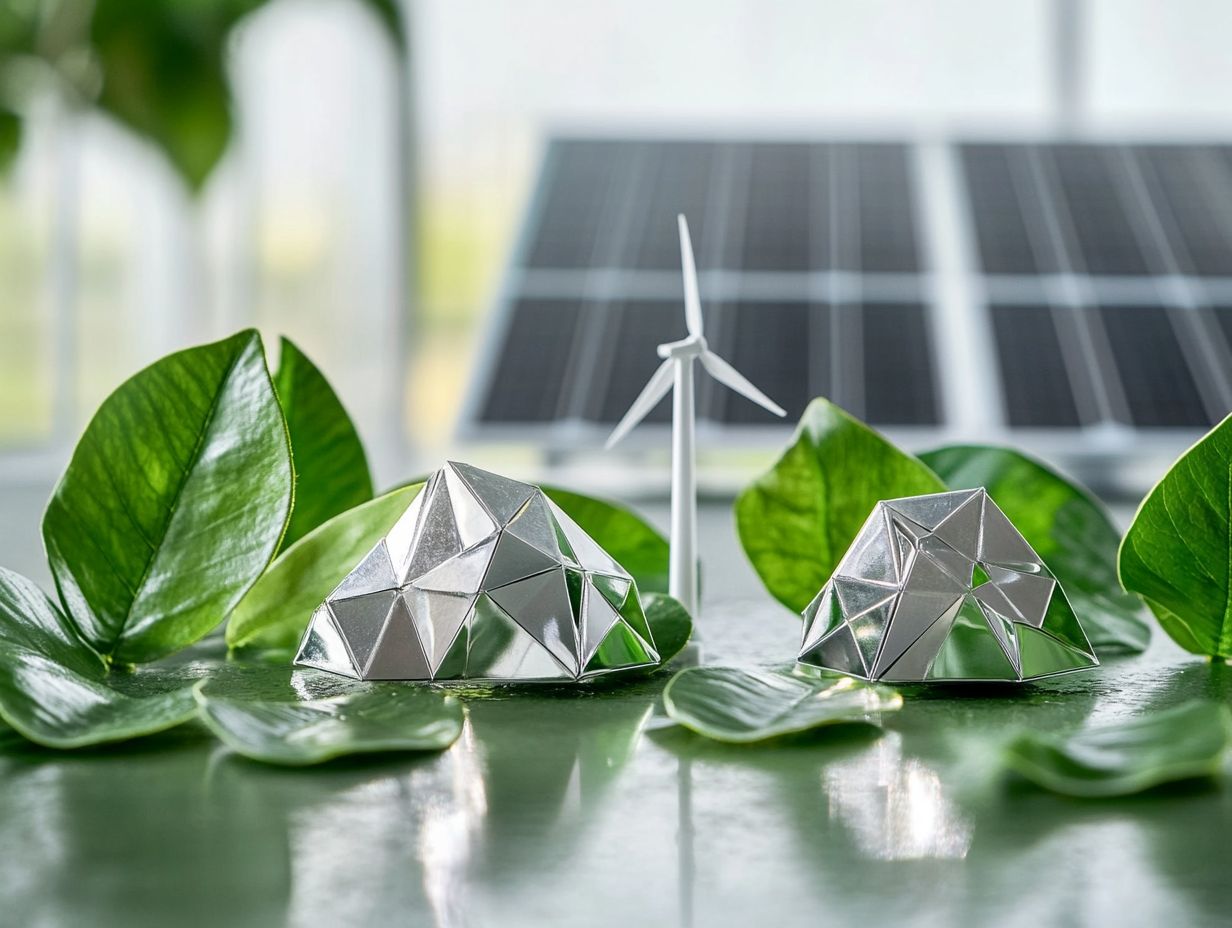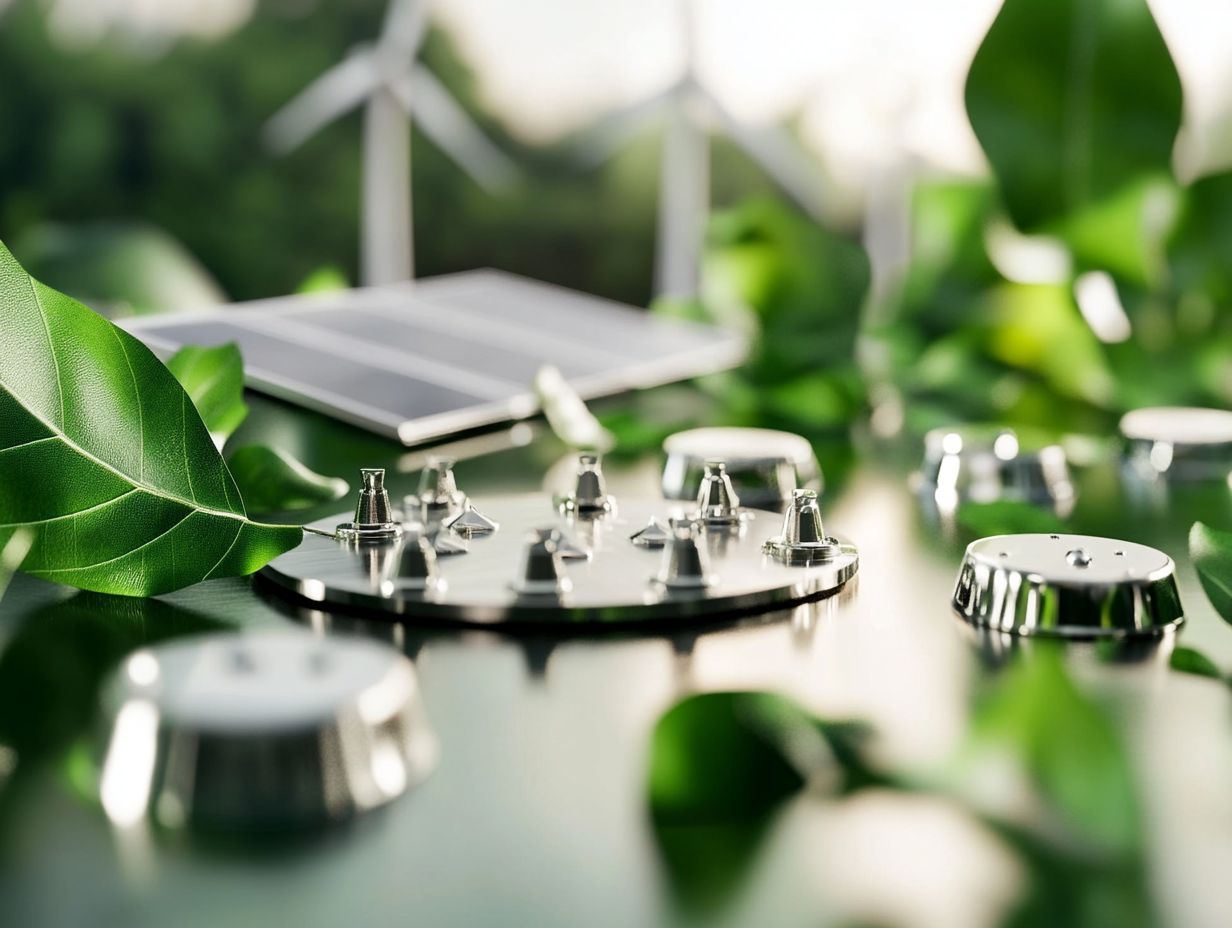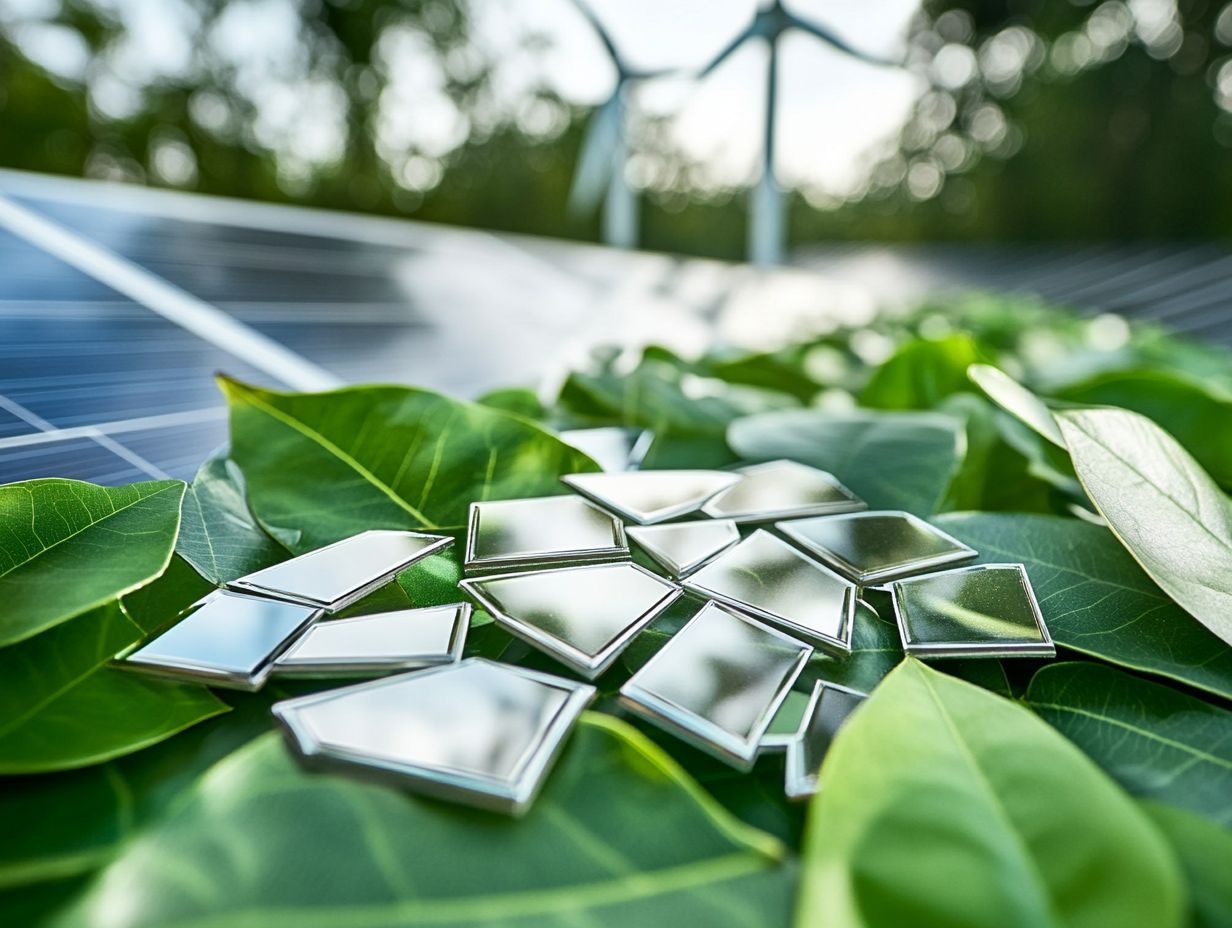The Role of Palladium in Sustainable Technologies
Sustainable technologies are vital to combat the pressing environmental challenges we face right now. These include climate change and resource depletion.
By championing cleaner alternatives across industries like automotive and electronics, these innovations pave the way for a more sustainable future.
Palladium stands out as a remarkable element, boasting unique properties and a range of applications. From catalyzing chemical reactions to enhancing renewable energy systems, its role in sustainable practices is both multifaceted and significant.
However, the journey isn t without its challenges; the use of palladium does raise important environmental and economic concerns. This article will delve into its properties, applications, and future potential in the realm of sustainability.
Contents
- Key Takeaways:
- The Importance of Sustainable Technologies
- Palladium: Properties and Uses
- Palladium’s Role in Sustainable Technologies
- Challenges and Limitations of Using Palladium
- Future Outlook for Palladium in Sustainable Technologies
- Frequently Asked Questions
- What is the role of palladium in sustainable technologies?
- How does palladium contribute to reducing air pollution?
- What other sustainable technologies utilize palladium?
- Is palladium a limited resource for sustainable technologies?
- Can palladium be replaced with other materials in sustainable technologies?
- What impact does the use of palladium in sustainable technologies have on the environment?
Key Takeaways:

- Palladium plays a crucial role in sustainable technologies due to its unique properties and versatile applications.
- Utilizing palladium in sustainable technologies can help reduce environmental impact and promote economic growth.
- Despite its benefits, the use of palladium in sustainable technologies also poses challenges and limitations that need to be addressed for long-term sustainability.
The Importance of Sustainable Technologies
Materials like palladium and platinum are recognized for their special qualities. They help reduce emissions and support renewable energy.
The continuous evolution in these sectors underscores the significance of sustainable development goals and the adoption of green technologies.
This is crucial not only for minimizing ecological footprints but also for bolstering economic resilience.
Overview of Sustainability and its Impact
Sustainability is all about meeting your current needs without jeopardizing the ability of future generations to fulfill theirs. It encompasses environmental, economic, and social dimensions.
The environmental pillar guides us in maintaining ecological balance. It champions renewable resources and advocates for minimizing pollution, all aimed at ensuring a healthy planet for years to come.
The economic aspect highlights the importance of sustainable growth, where businesses and communities can thrive without depleting precious resources or compromising future opportunities.
The social pillar emphasizes equity and community engagement, ensuring that every voice is heard and valued. To navigate these interconnected pillars effectively, technological innovation is essential. It offers solutions that boost efficiency and reduce waste.
Your awareness as a consumer is crucial. When you stay informed, you drive demand for sustainable products and practices, paving the way for a more responsible marketplace.
Palladium: Properties and Uses
Palladium, a rare and precious metal, boasts unique properties that set it apart. Its high corrosion resistance and exceptional catalytic capabilities render it invaluable across a range of applications.
In particular, its significance is highlighted in the automotive industry, where it plays a crucial role in catalytic converters, effectively reducing harmful emissions and contributing to a cleaner environment.
Physical and Chemical Properties

Palladium is a stunning silvery-white metal known for its remarkable catalytic properties, high thermal and electrical conductivity, and impressive resistance to corrosion. This makes it an exceptional choice for a wide range of effective applications.
Its unique atomic structure allows it to absorb hydrogen, enhancing its effectiveness in catalytic converters, devices that change harmful gases from vehicles into less harmful ones. This capability is vital for reducing harmful emissions and positions palladium as a preferred alternative to platinum in some contexts due to its lower cost and comparable efficiency.
In electronics, palladium excels with its outstanding conductivity and resistance to oxidation. This solidifies its essential role in connectors and capacitors, where reliability and performance are crucial. Compared to platinum, palladium not only offers similar benefits but also has a lower density, making it an attractive option across various sectors, from jewelry to medicine.
Common Applications
Palladium is crucial for catalytic converters, which change harmful gases from cars into less harmful emissions. Its uses also extend into the electronics industry, hydrogen technology, and fuel cells.
In cars, palladium helps reduce dangerous emissions, meeting strict environmental laws. Vehicles with palladium catalytic converters are better at lowering carbon monoxide and nitrogen oxide emissions, contributing positively to clean air initiatives.
Palladium is key in electronics, making high-performance capacitors and connectors that boost device efficiency. It is also gaining traction in fuel cell technology, helping convert hydrogen into energy for cleaner energy solutions.
Collectively, these applications highlight palladium’s vital contributions to both industry advancement and environmental protection.
Palladium’s Role in Sustainable Technologies
Palladium holds a crucial position in advancing sustainable technologies, making substantial contributions to emissions reduction. Its application in catalytic converters and fuel cell technology fosters cleaner energy solutions across various sectors, paving the way for a greener future.
How Palladium Contributes to Sustainability
Palladium plays a vital role in sustainability, especially in catalytic converters, where it significantly reduces harmful emissions from internal combustion engines, and in fuel cells that convert hydrogen into clean energy.
By facilitating chemical reactions that transform toxic exhaust gases into less harmful substances, palladium is key in minimizing air pollution. Its exceptional catalytic properties optimize vehicle performance while ensuring compliance with regulatory emissions standards, ultimately contributing to cleaner urban environments.
In hydrogen fuel cells, palladium acts as a catalyst to generate electricity efficiently. This presents a robust alternative to fossil fuels. The widespread adoption of these technologies not only curtails greenhouse gas emissions but also aligns with global efforts to transition toward more sustainable energy sources. This shift fosters innovation and enhances energy security within communities, highlighting the importance of understanding the role of palladium in green tech.
Challenges and Limitations of Using Palladium

While palladium offers distinct advantages, its use comes with a set of challenges and limitations that cannot be overlooked.
Consider the environmental concerns tied to mining, the economic implications from supply chain dynamics, and the ever-fluctuating market prices that can impact its viability.
Potential Environmental and Economic Concerns
Mining palladium presents significant environmental concerns that cannot be overlooked. Ecological degradation and misuse of resources are serious issues. The economic implications are heavily influenced by market demand and geopolitical factors.
This mining process can disrupt local ecosystems and threaten biodiversity. It can also alter water quality, impacting wildlife and human communities that rely on these resources for their livelihoods.
As the demand for palladium surges largely due to its critical role in devices that reduce harmful emissions from cars and electronics the market’s volatility can lead to unpredictable pricing and supply chain challenges. Communities that depend on palladium mining may experience economic fluctuations, making effective resource management essential.
While sustainable practices could help alleviate some of these negative effects, striking the right balance between economic benefits and environmental preservation remains a complex challenge within the sector.
Future Outlook for Palladium in Sustainable Technologies
The future outlook for palladium in sustainable technologies is indeed promising. This optimism is fueled by a rising market demand for emissions control technologies and electric vehicles.
Ongoing advancements in technology and investment opportunities enhance its potential, making it a compelling area to watch closely.
Advancements and Potential Developments
Recent advancements in technology are pushing the boundaries of palladium’s applications in sustainable technologies, particularly within the burgeoning electric vehicles market. Its unique properties enhance both performance and durability, making it a sought-after material.
This surge in interest is driven by manufacturers eager to improve energy efficiency and reduce emissions. As hybrid and fully electric vehicles become more prevalent, palladium’s role grows even more crucial, especially in catalytic converters, where it helps convert harmful gases into less harmful substances. Additionally, understanding the role of precious metals in sustainable tax planning can further enhance investment strategies.
Market trends reveal a definite shift toward sustainable practices, prompting exploration into alternative sources and recycling methods for palladium. This exploration could stabilize its supply and price, making it a more reliable choice for manufacturers. Innovations like nanotechnology are also on the horizon, potentially unlocking new uses for palladium while reinforcing the industry’s commitment to eco-friendly solutions. For more insights, check out understanding palladium’s role in the future of tech.
Frequently Asked Questions

What is the role of palladium in sustainable technologies?
Palladium plays a crucial role in sustainable technologies as it is a key component in the production of catalytic converters, which reduce harmful emissions from vehicles.
How does palladium contribute to reducing air pollution?
Palladium is used in catalytic converters to convert harmful pollutants in vehicle exhaust into less harmful substances, helping to reduce air pollution.
What other sustainable technologies utilize palladium?
Palladium is also used in fuel cells, which produce electricity through a chemical reaction without emitting harmful pollutants.
Is palladium a limited resource for sustainable technologies?
Palladium is a rare and finite resource, making it important to find more sustainable methods of extraction and recycling to meet the increasing demand for its use in sustainable technologies.
Can palladium be replaced with other materials in sustainable technologies?
While there are alternative materials that can be used in some sustainable technologies, such as platinum in catalytic converters, they may not be as efficient or cost-effective as palladium.
What impact does the use of palladium in sustainable technologies have on the environment?
Palladium mining and extraction can have negative impacts on the environment. However, the use of palladium in sustainable technologies ultimately helps to reduce overall environmental harm by decreasing air pollution and promoting cleaner energy sources.















